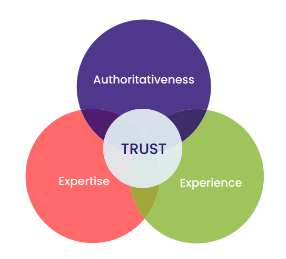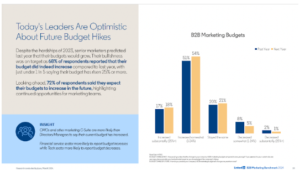Building a data-informed search engine optimization strategy is critical for every brand. But before you can start improving your site’s SEO, you’ll have to learn how to monitor your website’s SEO rankings in the first place. Earning rankings for strategically important keywords is a clear sign that your approach is working, but the difference between a top-10 ranking versus a top-3 ranking can lead to a massive difference in organic traffic.
There are plenty of free and easy-to-access resources out there you can use to start checking your brand’s SEO performance today. Let’s go over how to use a few of the most helpful starter tools and what to do with the information they’ll help you uncover.
In 2023, the top-ranked result of a SERP in Google generated 39.8% CTR rates, with the second and third-ranking results getting 18.7% and 10.2% respectively. (Backlinko)
How to check your website’s SEO rankings
You can manually check your website’s SEO rankings but, as TopRank Marketing’s associate content director Nick Nelson wrote recently, this is a bit like “using an eyedropper to drain a swimming pool.”
If you need to find out how effectively you’re ranking for hundreds or thousands of keywords in a reasonable timeframe, you’ll want to use SEO website analysis tools. Start with these:
Free SEO analysis tools
Google Search Console (GSC)
Google created its Search Console tool to track website performance on its search engine. Using it is easy and free:
- Verify that you own your domain by following these steps.
- Type in your domain in the “domain” section or the URL of the specific page you’d like to check in the “URL prefix” section.
- Find the Performance section on the menu sidebar to the left of your results and click on the “Search Results” tab beneath it.
- Click “queries” to see a list of all the search terms that your site or page currently ranks for.
- Click on the “average position” number above the line chart to see your average position for each query.
- You can also edit the timeframe you’re checking by clicking the “Date” tab above the chart.
From this view, you can use GSC to see:
- All of the search phrases your site is currently ranking for.
- Where you are ranking on Google SERPs of that search phrase.
- Which pages appear in the SERP.
- The number of clicks and impressions your URL receives from this search phrase.
- The click-through rate of your URL in these SERPs.
Google Analytics (GA)
Using Google Analytics is a great way to further contextualize the information you find on GSC. While Search Console focuses exclusively on Google organic (or unpaid) traffic, Google Analytics provides information about all sources of traffic, including organic search, paid search, social media, direct visits and more.
After you see how your pages are performing in SERPS with GSC, you can use GA to understand how well they’re performing in terms of metrics like views, events, and conversions. By looking for correlations between SERP and performance, you can understand which of your SEO efforts are translating to greater success.
Use this information to start putting together an SEO optimization strategy and check back frequently to see the results of your efforts.
Paid SEO analysis tools
When you want to take your SEO evaluations to the next level, a wide variety of free and paid tools can provide powerful analytics and insights. These are a few of our favorites.
Semrush: Semrush, a frequently used tool at TopRank for SEO and content marketing, offers a user-friendly interface facilitating quick assessment of SERP rankings, search phrase details, technical SEO audits, backlink monitoring and more.
Ahrefs: Ahrefs provides a deep suite of tools including keyword rank tracking as well as competitor backlink and keyword analysis through its proprietary web crawler, AhrefsBot, making it a highly reliable source for up-to-date and accurate SEO information.
Moz Pro: Moz Pro offers an all-in-one SEO toolkit featuring keyword exploration, rank tracking, site crawling, and customizable reporting tools, providing comprehensive insights and analysis tailored to your brand’s needs.
How to improve your website’s SEO rankings
Once you can measure your SEO performance, you can start improving it. As you take each of the following steps, check back on your SEO and site performance using GSC and GA to see their effects.
Build your strategy
The first and most important thing you can do to start improving your SEO performance is to commit to a formal strategy. You have to define what you want to rank for, why, and how you will pursue those rankings.
Start with keyword research. Develop a prioritized list of search terms valuable to your business. These should be a combination of branded terms – such as the name of your brand, products, and services – and non-branded terms related to the kind of service you offer, such as your industry and product category.
One of the most effective ways to learn which keywords to pursue is to develop an understanding of search intent. Download our free guide on Marketing With Intent to learn more.
Look for optimization opportunities
When you have a good understanding of the search terms you want to pursue, associate each with the page you want to rank for that term. Use GSC and GA to check your page’s current ranking with its target keywords to start looking for opportunities. For example:
- If your page isn’t ranking for the search term at all, look for ways to rewrite the name, headers, and content to include that keyword where it seems appropriate and natural. Be careful not to “keyword stuff” by adding the keyword too many times or you’ll be penalized. Also make sure to avoid using AI-generated content, as Google’s algorithm is evolving to devalue it.
- If your page is ranking but not as high as you’d like it to, try comparing it to the pages that currently outrank it to see what you could do to improve your own ranking. You could try restructuring the existing content, adding new content such as new sections, images or videos, or adding semantically-related keywords to the page, just to name a few tactics.
- If your pages are competing against each other to rank for the same keyword, or “cannibalizing” each other, try to edit the content on both pages so they rank for their own, unique keywords instead. A cannibalization audit is an important aspect of an SEO content audit, helping find and resolve duplicative content that hurts rankings.
Create high-quality content
Creating new content, or building out and optimizing your existing content, will become the cornerstone of any impactful SEO strategy. The more relevant search terms your site ranks for, the higher your site’s authority on search engines becomes. The higher your authority, the easier it is to rank for the keywords you’re after. A rising tide raises all boats.
To raise your authority, therefore, you should constantly strive to pursue new search terms that are relevant to your brand and/or services. The best way to do this on a long-term basis is to start producing high-quality content of your own. The more useful your audience finds your content, the more they’ll interact with it, the higher you’ll rank for the search term you want, and the more authority you’ll build.
SEO optimization is a never-ending process that’s a lot of work, but you don’t need to do it all alone.
No matter where you are in your SEO journey, the experts at TopRank Marketing are ready to help. Learn about our SEO services and how we can bring your rankings to the top.
The post How to Check Your Website’s SEO Rankings (and Improve Them) appeared first on TopRank® Marketing.
Source: feedburner.com



